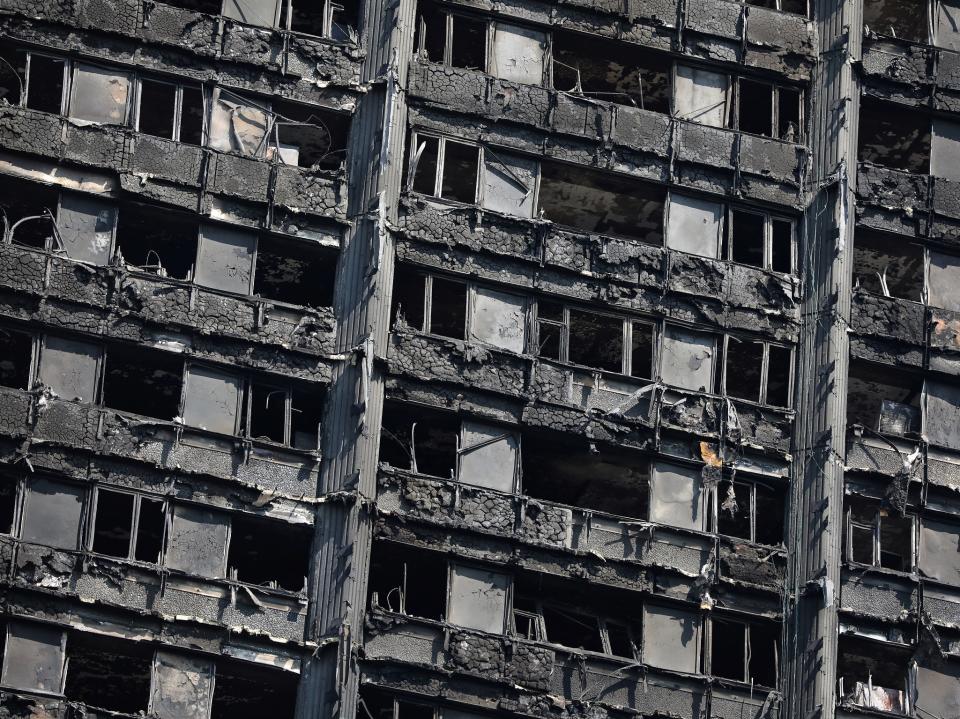Grenfell Tower fire: Police considering manslaughter charges and have seized documents
Detectives are considering manslaughter charges as part of the investigation into the Grenfell Tower disaster, a spokesperson from the Metropolitan Police has said.
Every criminal offence is being considered, according to Detective Superintendent Fiona McCormack, after it emerged police had seized documents and materials from a “number of organisations”.
Investigators have now confirmed the fire was started by a Hotpoint fridge-freezer before spreading to the building’s “combustible” cladding.
“We are looking at every criminal offence from manslaughter onwards, we are looking at every health and safety and fire safety offences and we are reviewing every company at the moment involved in the building and refurbishment of Grenfell Tower,” Ms McCormack said.
It comes as the Government identified a further 14 council-owned high rises that are fitted with similar combustible cladding to that used on Grenfell Tower, as confusion reigned over the true number of blocks that could be affected by the scandal.
Tests revealed blocks in nine local authority areas across the UK were fitted with flammable panels after a "small number" of samples were analysed, the Department for Communities and Local Government (DCLG) said.
Cladding will also be removed from nine blocks in Salford, that were recently refurbished, after it emerged they have similar cladding. A city council spokesperson said the panels have yet to be tested by DCLG but that they would be removed as a precaution regardless of the result.
A total of 600 council blocks have been fitted with cladding that needs to undergo testing to determine if it is safe, the Government confirmed yesterday, with residents being forced to wait to find out if their homes are safe.
But concerns were growing the 600 figure could be just the tip of the iceberg as it does not account for any private dwellings or commercial properties. The Government has encouraged private landlords to send in samples for testing but they are under no obligation to do so, raising serious concerns for potentially thousands more people who are renting in the private sector.
Hotel chain Premier Inn was also affected. It said it was "concerned" about material used on three of its properties in Maidenhead, Brentford and Tottenham.
Cladding on buildings in Camden and Plymouth was already being removed, after the panelling failed safety tests.
It was unclear whether the same rigorous testing would also apply to other high-rise buildings outside of the housing sector. The Independent contacted the Cabinet office to ask whether hospitals, schools and other publicly-owned high-rise buildings would also be tested but did not receive a response.
Cladding installed on the outside of Grenfell Tower last year, for both insulation and aesthetic purposes, is suspected to have aided the rapid and “unprecedented” spread of the blaze, trapping dozens of residents inside.
Sam Webb, an architect who investigated 2009’s deadly Lakanal House fire, said similar aluminium composite material (ACM) cladding had been found to be “flammable” elsewhere, being linked to fires in Australia, Russia and the United Arab Emirates.
Ms McCormack said the Hotpoint FF175BP fridge-freezer model had not been subject to any product recall but the Grenfell Tower's cladding, tiles and insulation all failed safety tests carried out as part of the investigation.
She said tests carried out as part of the investigation so far were “small scale” but, with regards to the tiles and insulation, added: “All I can say at the moment is they don’t pass any safety tests.
“What we are being told at the moment by the Building Research Establishment is that the cladding and insulation failed all safety tests.”
Witnesses at the scene of the 24-storey fire on 14 June said a resident told neighbours his fridge had “exploded” while alerting them to the initial blaze.
Ms McCormack said police were still concerned they did not have a full picture of the number of people inside the building.
At least 79 people were killed in the fire, but police are still appealing for information from members of the public to identify anyone else who might have been in the tower at the time of the tragedy.
“What we haven't got is a picture of how many people might have been in there,” Ms McCormack said. “That's the number I’m really worried about, that there might have been other innocent people in there.”
The statement echoed concerns from Police Commander Stuart Cundy about the scale of the task in identifying the victims.
Police are still carrying out forensic searches on the block in an attempt to recover all those who may have died inside. But Ms McCormack warned the search may continue until the end of the year, and that not everyone may be able to be identified due to the intense heat.
“We have been in Grenfell Tower, from top to bottom, last week. Next week we will be installing a lift to the outside of the building to assist. But our forensic search may not be complete until the end of the year,” she said.
“There is a terrible reality that we may not find or identify everyone who died due to the intense heat.”

 Yahoo News
Yahoo News 

